Grow Pineapples at Home? Absolutely! Imagine plucking a juicy, sun-ripened pineapple straight from your own backyard. Sounds like a tropical dream, right? Well, it’s more achievable than you think! For centuries, pineapples have symbolized hospitality and warmth, a tradition rooted in their exotic origins and the joy they bring to gatherings. From being a rare delicacy gracing royal tables to becoming a symbol of welcome, the pineapple’s story is as rich as its flavor.
But let’s be honest, buying pineapples from the store can sometimes be a gamble – you never quite know how sweet they’ll be. That’s where this DIY guide comes in! I’m going to show you some simple, effective tricks to grow pineapples at home, even if you don’t have a sprawling garden. We’ll cover everything from selecting the perfect pineapple top to nurturing it into a thriving plant. Not only will you save money, but you’ll also experience the immense satisfaction of growing your own delicious fruit. Plus, it’s a fantastic conversation starter! So, grab your gardening gloves, and let’s embark on this exciting tropical adventure together!
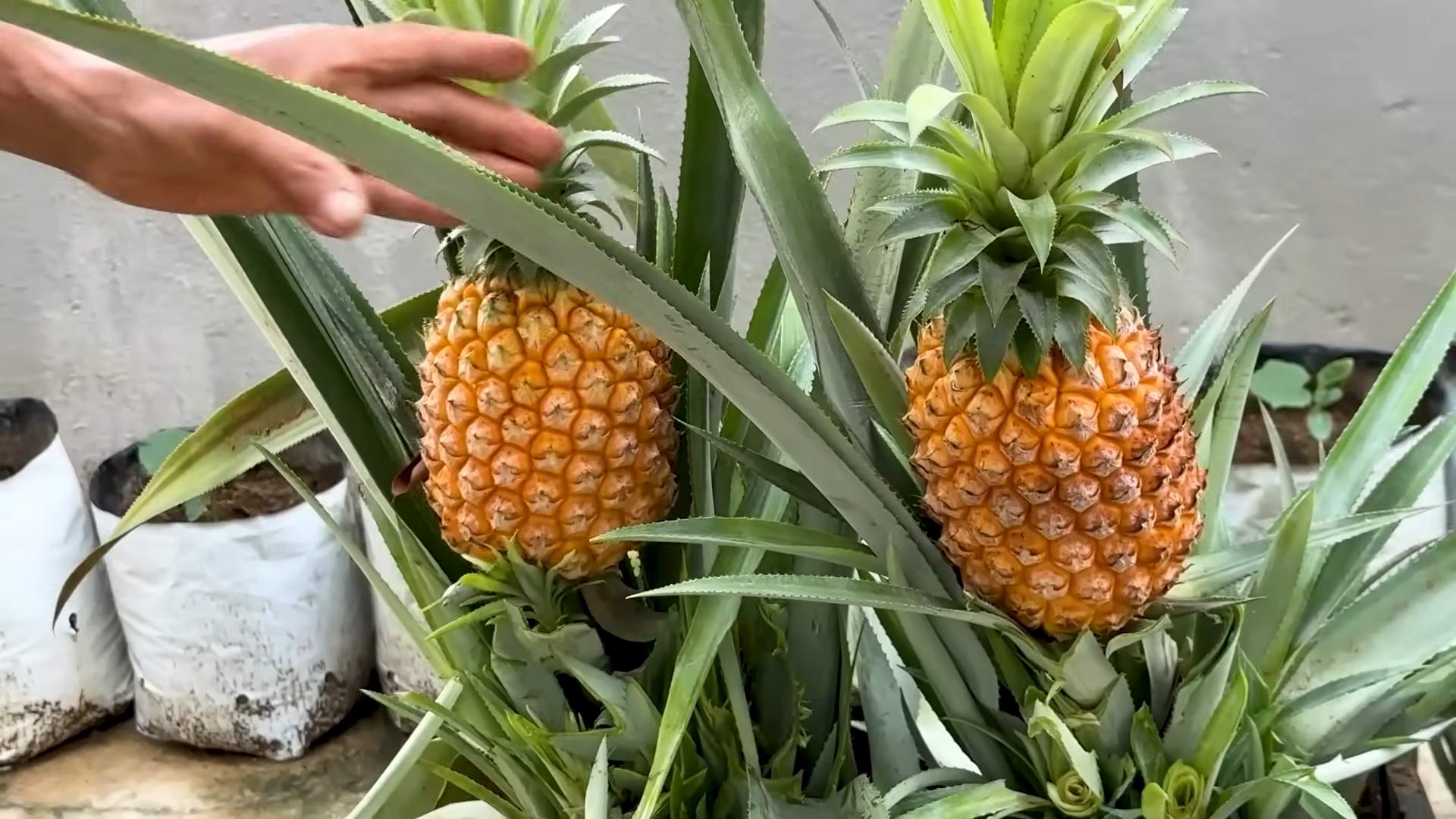
Grow Your Own Tropical Delight: A Beginner’s Guide to Growing Pineapples at Home
Hey there, fellow plant enthusiasts! Ever dreamt of harvesting your own juicy pineapple right from your backyard (or even your balcony)? Well, dream no more! Growing pineapples at home is surprisingly easier than you might think, and I’m here to guide you through the entire process. Get ready to impress your friends and family with your newfound tropical gardening skills!
Choosing Your Pineapple Top
The first step to pineapple paradise is selecting the right pineapple top. This is crucial for success, so pay close attention!
* Look for a healthy pineapple: Choose a ripe pineapple from the grocery store. The fruit should be fragrant and have a vibrant color. Avoid pineapples with bruises, soft spots, or signs of damage.
* Inspect the leaves: The leaves should be green, firm, and free from pests or diseases. A few brown tips are okay, but avoid tops with widespread browning or yellowing.
* Consider the variety: While most grocery store pineapples are the ‘Smooth Cayenne’ variety, which grows well, you might find other varieties at specialty stores or farmers’ markets. Experiment if you’re feeling adventurous!
Preparing the Pineapple Top for Planting
Now that you’ve chosen your pineapple, it’s time to prepare the top for planting. This involves removing the fruit and encouraging root growth.
1. Twist and pull (or cut): The easiest way to remove the top is to firmly grasp the leaves and twist them off the fruit. If it doesn’t come off easily, use a sharp knife to cut the top off, leaving about an inch of fruit attached.
2. Remove the fruit: Carefully remove any remaining fruit flesh from the base of the top. This is important because the fruit will rot and attract pests if left on. You can use a knife to gently scrape away the flesh.
3. Peel back the lower leaves: Peel off several layers of the lower leaves from the base of the top, exposing about an inch or two of the stem. This will encourage root growth.
4. Let it dry: Allow the pineapple top to dry for a few days (3-7 days) in a cool, dry place. This helps to prevent rot. You’ll notice the cut end callousing over – that’s a good sign!
Rooting the Pineapple Top
There are two main methods for rooting your pineapple top: in water or directly in soil. I personally prefer the water method because you can see the roots developing.
Rooting in Water
1. Prepare a container: Choose a clear glass or jar that’s wide enough to support the pineapple top.
2. Add water: Fill the container with enough water to cover the exposed stem, but not the leaves.
3. Place the pineapple top: Carefully place the pineapple top in the water, ensuring that the stem is submerged.
4. Find a sunny spot: Place the container in a warm, sunny location.
5. Change the water regularly: Change the water every few days to prevent algae growth and keep the water fresh.
6. Wait for roots: Be patient! It can take several weeks for roots to develop. You should see small roots emerging from the stem. Once the roots are about 2-3 inches long, it’s time to plant.
Rooting Directly in Soil
1. Prepare a pot: Choose a pot that’s at least 6 inches in diameter and has drainage holes.
2. Fill with well-draining soil: Use a well-draining potting mix, such as a cactus or succulent mix. You can also amend regular potting mix with perlite or sand to improve drainage.
3. Plant the pineapple top: Dig a hole in the center of the pot and plant the pineapple top, burying the exposed stem.
4. Water gently: Water the soil gently until it’s moist, but not soggy.
5. Find a sunny spot: Place the pot in a warm, sunny location.
6. Keep the soil moist: Keep the soil consistently moist, but avoid overwatering.
Planting Your Rooted Pineapple Top
Whether you rooted your pineapple top in water or directly in soil, it’s now time to plant it in a larger pot or in the ground.
1. Choose a pot or location: If you’re planting in a pot, choose one that’s at least 10-12 inches in diameter. If you’re planting in the ground, choose a sunny location with well-draining soil. Pineapples thrive in warm climates, so make sure your location is suitable.
2. Prepare the soil: If you’re planting in the ground, amend the soil with compost or other organic matter to improve drainage and fertility.
3. Dig a hole: Dig a hole that’s slightly larger than the root ball of your pineapple top.
4. Carefully remove the pineapple top: If you rooted your pineapple top in water, carefully remove it from the container and gently loosen the roots.
5. Plant the pineapple top: Place the pineapple top in the hole and backfill with soil. Gently pat down the soil around the base of the plant.
6. Water thoroughly: Water the soil thoroughly until it’s moist, but not soggy.
Caring for Your Pineapple Plant
Now that your pineapple plant is planted, it’s time to provide it with the care it needs to thrive.
* Sunlight: Pineapples need at least 6 hours of direct sunlight per day. Place your plant in a sunny location or supplement with grow lights if necessary.
* Watering: Water your pineapple plant regularly, especially during hot, dry weather. Allow the soil to dry out slightly between waterings. Avoid overwatering, as this can lead to root rot.
* Fertilizing: Fertilize your pineapple plant every 2-3 months with a balanced fertilizer. Follow the instructions on the fertilizer label.
* Temperature: Pineapples thrive in warm temperatures (65-85°F). Protect your plant from frost and freezing temperatures. If you live in a cold climate, you can bring your plant indoors during the winter.
* Humidity: Pineapples prefer high humidity. You can increase humidity by misting your plant regularly or placing it on a pebble tray filled with water.
* Pest control: Keep an eye out for pests such as mealybugs and scale. Treat infestations promptly with insecticidal soap or neem oil.
Encouraging Fruiting
Pineapples typically take 1-3 years to produce fruit. Here are some tips to encourage fruiting:
* Ethylene gas: You can encourage fruiting by exposing your pineapple plant to ethylene gas. Place a ripe apple or banana near the plant, or cover the plant with a plastic bag along with a ripe apple or banana for a few days. The ethylene gas released by the fruit will stimulate flowering.
* Magnesium sulfate (Epsom salts): Some gardeners recommend applying magnesium sulfate (Epsom salts) to the soil to encourage fruiting. Dissolve 1 tablespoon of Epsom salts in 1 gallon of water and apply to the soil every few months.
* Patience: The most important thing is to be patient! It takes time for a pineapple plant to mature and produce fruit.
Harvesting Your Pineapple
Congratulations! After all your hard work, it’s finally time to harvest your pineapple.
* Signs of ripeness: A ripe pineapple will have a fragrant aroma and a golden-yellow color. The eyes (the individual segments of the fruit) will be flattened and slightly bulging.
* Harvesting: Use a sharp knife to cut the pineapple from the plant. Leave a few inches of stem attached.
* Enjoy! Enjoy your homegrown pineapple fresh, grilled, or in your favorite recipes.
Troubleshooting
Even with the best care, you might encounter some problems along the way. Here are some common issues and how to address them:
* Yellowing leaves: Yellowing leaves can be caused by overwatering, underwatering, nutrient deficiencies, or pests. Adjust your watering schedule, fertilize your plant, and inspect for pests.
* Brown leaf tips: Brown leaf tips are often caused by dry air or salt buildup in the soil. Increase humidity and flush the soil with water to remove excess salts.
* Root rot: Root rot is caused by overwatering and poor drainage. Allow the soil to dry out between waterings and ensure that your pot has drainage holes.
* No fruit: If your pineapple plant isn’t producing fruit, it may not be getting enough sunlight, nutrients, or water. Try exposing it to ethylene gas to encourage fruiting.
Final Thoughts
Growing your own pineapple at home is a rewarding experience that allows you to enjoy fresh, delicious fruit. With a little patience and care, you can successfully grow your own tropical delight. So, grab a pineapple, follow these steps, and get ready to enjoy the
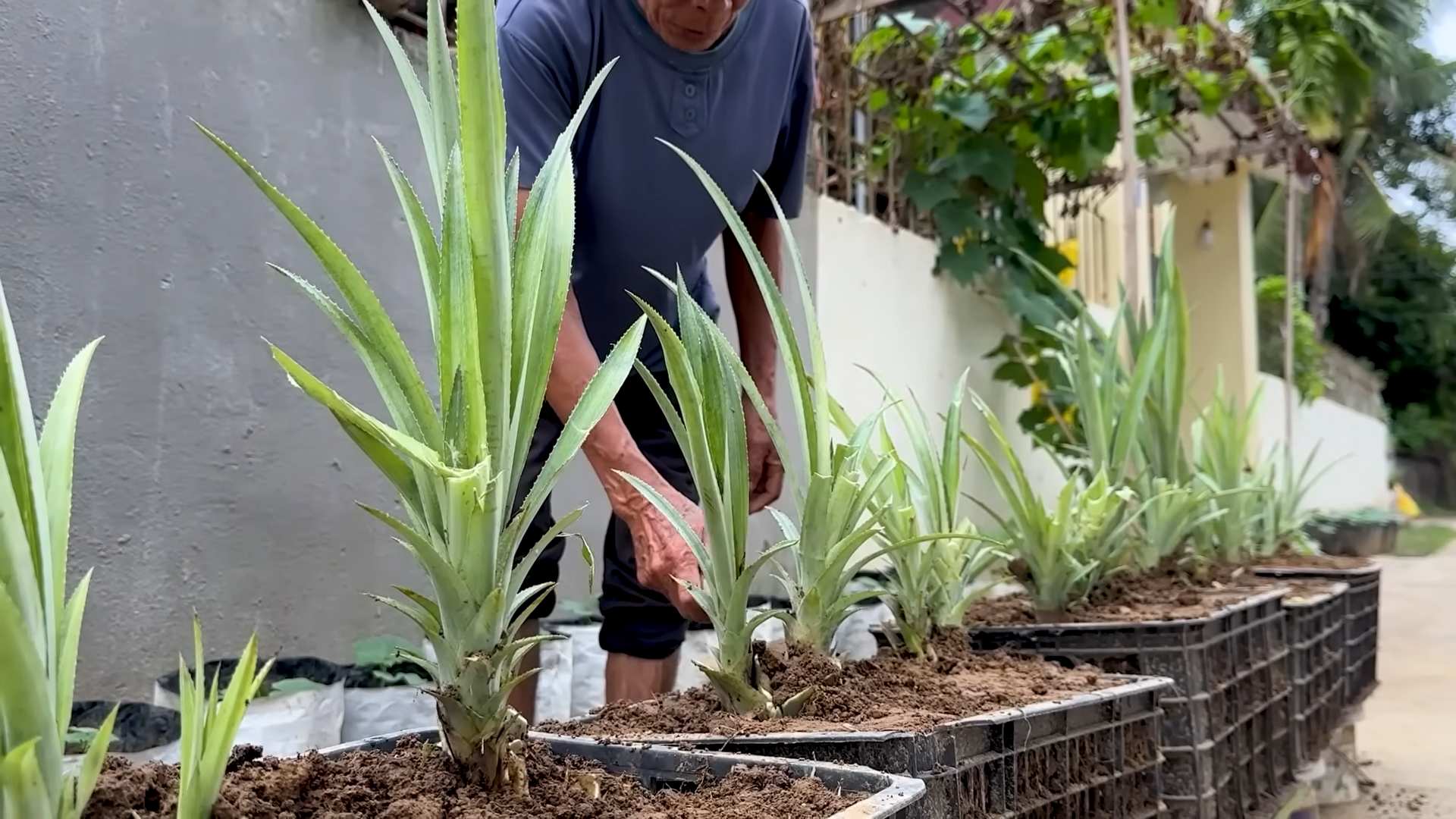
Conclusion
So, there you have it! Growing pineapples at home is not just a fun project; it’s a rewarding experience that brings a touch of the tropics right to your backyard or even your windowsill. Forget the store-bought fruit, often picked before it’s truly ripe and shipped across vast distances. Imagine the unparalleled flavor of a sun-ripened pineapple, bursting with sweetness and juiciness, grown with your own two hands. This DIY trick is a must-try for anyone who loves fresh produce, enjoys a bit of gardening, and appreciates the satisfaction of creating something amazing from scratch.
But the adventure doesn’t stop there! Feel free to experiment with different pineapple varieties. While the smooth Cayenne is a popular choice, consider trying a Sugarloaf for its extra sweetness or a Red Spanish for its vibrant color and slightly tart flavor. You can also adjust the soil mix to suit your specific climate and growing conditions. Some gardeners swear by adding extra perlite for improved drainage, while others prefer a slightly more acidic mix. Don’t be afraid to tweak the process to find what works best for you.
Furthermore, consider the presentation! Once your pineapple plant is established, you can transplant it into a decorative pot to create a stunning centerpiece for your patio or balcony. Imagine the conversations it will spark! And when your pineapple finally ripens, think about all the delicious ways you can enjoy it: grilled, juiced, added to smoothies, or simply enjoyed fresh off the plant.
We wholeheartedly encourage you to give this DIY trick a try. It’s easier than you might think, and the results are well worth the effort. Not only will you have a delicious and healthy fruit to enjoy, but you’ll also gain a deeper appreciation for the natural world and the magic of growing your own food.
Once you’ve embarked on your pineapple-growing journey, we’d love to hear about your experiences! Share your tips, tricks, and photos in the comments below. Let’s create a community of pineapple enthusiasts and inspire others to discover the joy of growing their own tropical treats. Remember, every successful harvest starts with a single step – or in this case, a single pineapple top! So, grab a pineapple, get your hands dirty, and get ready to experience the satisfaction of growing your very own, homegrown pineapple. This is truly the best way to ensure you have access to the freshest, most flavorful fruit possible.
Frequently Asked Questions (FAQs)
How long does it take to grow a pineapple from a top?
Patience is key when growing pineapples! It typically takes anywhere from 2 to 3 years for a pineapple plant to mature and produce fruit. The exact timeframe depends on several factors, including the variety of pineapple, the climate, and the growing conditions. Warmer climates generally lead to faster growth. Don’t get discouraged if you don’t see fruit right away. The plant needs time to establish a strong root system and accumulate enough energy to produce a pineapple. Consistent watering, fertilization, and plenty of sunlight will help speed up the process.
What kind of soil is best for growing pineapples?
Pineapples thrive in well-draining, slightly acidic soil. A good potting mix for pineapples should be a combination of peat moss, perlite, and vermiculite. This mixture provides good drainage, aeration, and moisture retention. You can also add some compost or aged manure to enrich the soil with nutrients. Avoid heavy clay soils, as they can retain too much water and lead to root rot. If you’re planting your pineapple in the ground, amend the soil with organic matter to improve drainage and fertility. A soil pH between 5.5 and 6.5 is ideal for pineapple growth.
How often should I water my pineapple plant?
Water your pineapple plant regularly, especially during the growing season (spring and summer). The soil should be kept consistently moist, but not waterlogged. Allow the top inch of soil to dry out between waterings. Overwatering can lead to root rot, which is a common problem with pineapples. In the fall and winter, reduce watering frequency as the plant’s growth slows down. Always check the soil moisture before watering to avoid overwatering. Consider using a moisture meter if you’re unsure.
What kind of fertilizer should I use for my pineapple plant?
Pineapples are heavy feeders and benefit from regular fertilization. Use a balanced fertilizer with a ratio of 10-10-10 or 14-14-14. Apply the fertilizer every 2-3 months during the growing season. You can also use a liquid fertilizer diluted to half strength and apply it more frequently. Avoid over-fertilizing, as this can burn the roots. Look for fertilizers specifically formulated for tropical plants, as they often contain micronutrients that are essential for pineapple growth. Foliar feeding with a diluted seaweed extract can also provide additional nutrients.
How much sunlight does a pineapple plant need?
Pineapples need plenty of sunlight to thrive. Aim for at least 6-8 hours of direct sunlight per day. If you’re growing your pineapple indoors, place it near a sunny window or use a grow light. Insufficient sunlight can lead to slow growth and reduced fruit production. If you live in a hot climate, provide some afternoon shade to prevent the leaves from scorching. Rotate your pineapple plant regularly to ensure that all sides receive equal sunlight.
How do I know when my pineapple is ripe?
Determining when a pineapple is ripe can be tricky, but there are several indicators to look for. The pineapple should have a vibrant color, ranging from green to yellow, depending on the variety. The bottom of the pineapple should feel slightly soft to the touch. The fruit should also have a sweet, fragrant aroma. You can also try gently pulling on one of the leaves near the top of the pineapple. If it comes out easily, the pineapple is likely ripe. Avoid pineapples that are bruised, discolored, or have a sour smell.
Can I grow a pineapple indoors?
Yes, you can definitely grow a pineapple indoors, especially if you live in a climate with cold winters. Choose a large pot with good drainage and use a well-draining potting mix. Place the pineapple plant near a sunny window or use a grow light to provide sufficient light. Water regularly and fertilize every 2-3 months. Indoor-grown pineapples may take longer to fruit than those grown outdoors, but with proper care, you can still enjoy a homegrown pineapple.
What are some common problems when growing pineapples?
Some common problems when growing pineapples include root rot, mealybugs, and scale insects. Root rot is caused by overwatering and can be prevented by using well-draining soil and avoiding overwatering. Mealybugs and scale insects can be controlled with insecticidal soap or neem oil. Regularly inspect your pineapple plant for signs of pests or diseases and take action promptly to prevent them from spreading.
Can I grow a pineapple from a store-bought pineapple?
Yes, you can absolutely grow a pineapple from a store-bought pineapple! Just make sure the pineapple is fresh and healthy. Follow the steps outlined in the article to prepare the pineapple top and plant it in soil. With patience and proper care, you can successfully grow a new pineapple plant from a store-bought pineapple.
What if my pineapple plant doesn’t produce fruit?
There are several reasons why your pineapple plant might not be producing fruit. It could be due to insufficient sunlight, inadequate watering, lack of fertilization, or simply not enough time. Make sure your pineapple plant is receiving at least 6-8 hours of direct sunlight per day, water it regularly, and fertilize it every 2-3 months. Be patient, as it can take 2-3 years for a pineapple plant to mature and produce fruit. You can also try forcing your pineapple plant to fruit by exposing it to ethylene gas. Place a ripe apple or banana near the plant and cover it with a plastic bag for a few days. The ethylene gas released by the fruit can stimulate flowering.

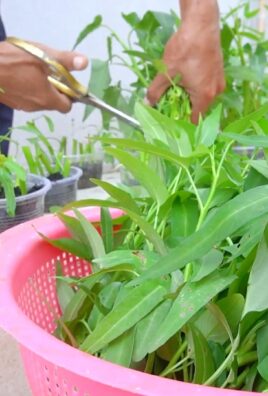
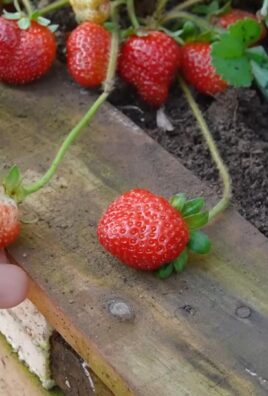
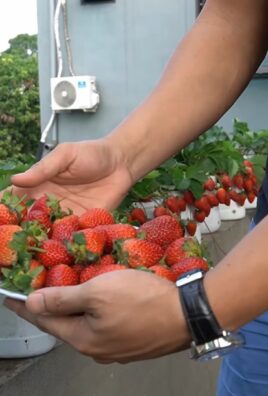
Leave a Comment